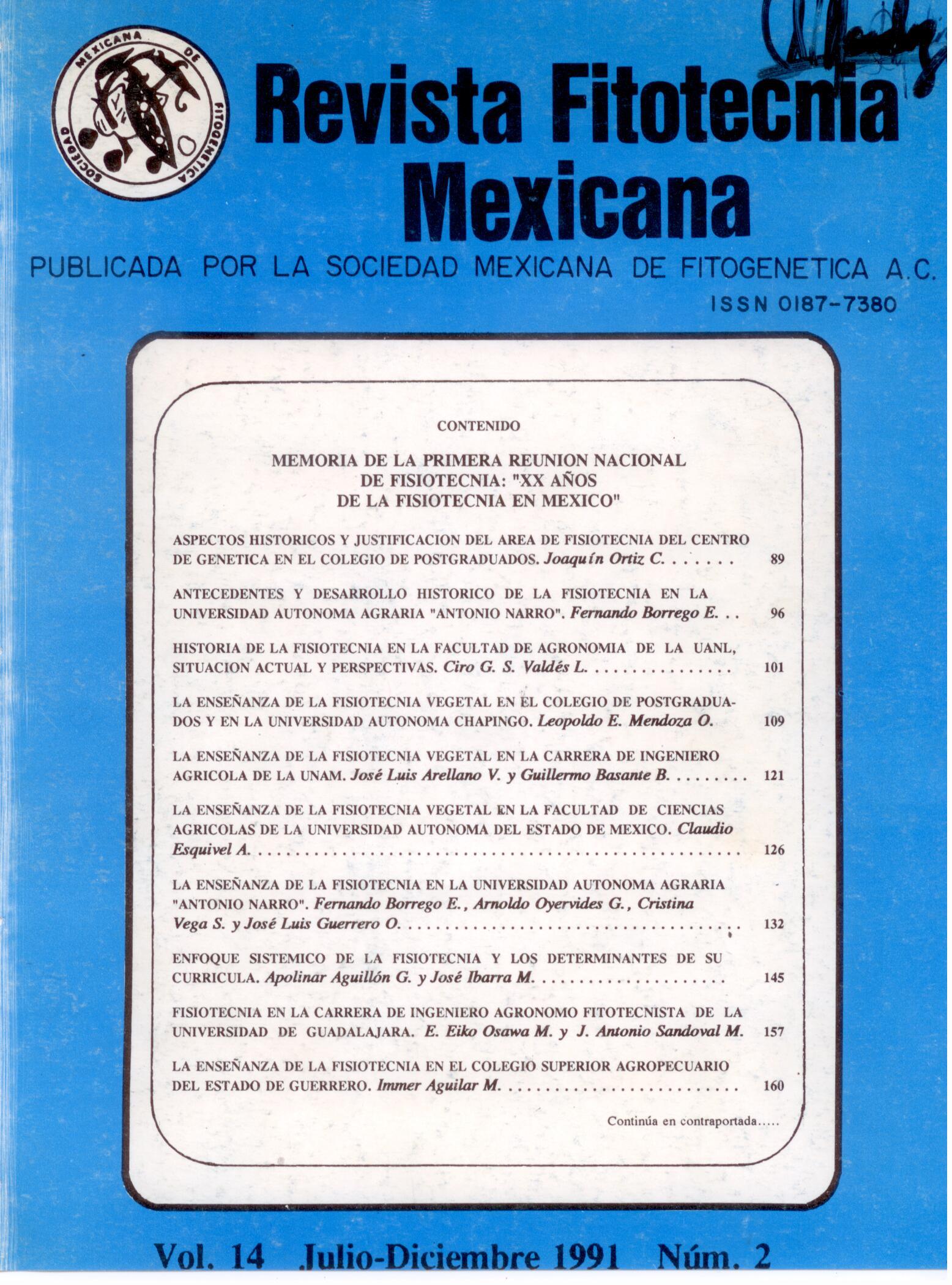PHYSIOTECHNICAL RESEARCH IN TROPICAL FRUIT CULTURE
Main Article Content
Abstract
The great climatic and edaphic diversity present in Mexico has allowed more than 50 fruit species to be cultivated, of which around 30 are tropical. Many of them, however, occupy small areas and really only seven species are the most economically important for our country. In order of importance these fruit trees are: orange (Citrus sinensis), mango (Mangifera indica), avocado (Persea Americana) , banana (Musa paradisiaca), Mexican lemon (Citrus auranrifolia Swingle), papaya (Carica papaya), and pineapple (Ananas comusus). Together, the seven fruit trees occupy an area of 687,000 hectares and produce 7.6 million tons of fruit, with a value close to 2.8 billion pesos for 1988 (Conafrut, 1988). These 30 species are grown in the warm, dry, subhumid and humid climates of Mexico below 600 meters above sea level and south of the Tropic of Cancer, although in the case of avocado and orange, they can also be found in semi-warm climates, between 600 and 1,800 meters above sea level, and at lower altitudes north of the Tropic of Cancer. Much of the research that has been carried out in tropical fruit growing in Mexico since the mid-1960s can be considered within the discipline called Physiotechnics. This research can be grouped into the following areas: adaptation of species and varieties, population densities, phenology, control of the flowering season and fruit ripening to extend the harvest season, control of tree size and rootstock-graft relationships. . The research has focused on finding answers to the limiting problems in the production of fruit crops based on the following main objectives: 1) Increase yield per unit of area; 2) Reduce production costs; 3) Improve fruit quality and, 4) Produce outside the normal season.

